Themed collection Quantum effects in small molecular systems

List of Participants
Poster list
Correction: Does cage quantum delocalisation influence the translation–rotational bound states of molecular hydrogen in clathrate hydrate?
Concluding remarks
The Faraday Discussion on quantum effects in small molecular systems was held on 10th – 12th September 2018 in Edinburgh, UK. It reflected a wide variety of new theoretical and experimental developments, which provide insights and methods applicable to larger systems as well.
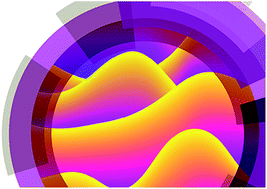
Faraday Discuss., 2018,212, 603-607
https://doi.org/10.1039/C8FD90054J
Spiers Memorial Lecture
This Spiers Memorial Lecture discusses quantum effects that can be calculated and observed in the chemical reactions of small molecules.
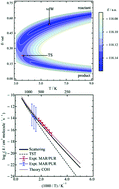
Faraday Discuss., 2018,212, 9-32
https://doi.org/10.1039/C8FD00131F
Stereochemistry-dependent hydrogen bonds stabilise stacked conformations in jet-cooled cyclic dipeptides: (LD) vs. (LL) cyclo tyrosine–tyrosine
Changing the chirality of one residue prevents the formation of an OH⋯O intramolecular hydrogen bond in cyclo di-tyrosine.
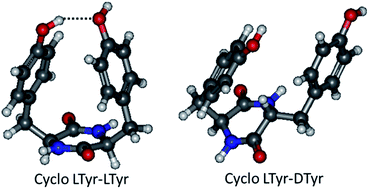
Faraday Discuss., 2018,212, 399-419
https://doi.org/10.1039/C8FD00079D
On the gas-phase formation of the HCO− anion: accurate quantum study of the H− + CO radiative association and HCO radiative electron attachment
Here, we present the first study of the radiative association of H− and CO to form the HCO− anion within a quantum time-independent approach..
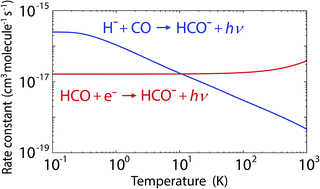
Faraday Discuss., 2018,212, 101-116
https://doi.org/10.1039/C8FD00103K
Ab initio instanton rate theory made efficient using Gaussian process regression
In this paper, we describe how we use Gaussian process regression to fit a local representation of the potential energy surface and thereby obtain the instanton rate using only a small number of ab initio calculations.

Faraday Discuss., 2018,212, 237-258
https://doi.org/10.1039/C8FD00085A
Heavy Rydberg states: large amplitude vibrations
New theory and calculations of extremely large vibrational amplitude states with heavy Rydberg character are reported in the H2 molecule.
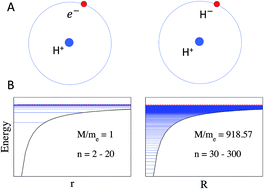
Faraday Discuss., 2018,212, 175-190
https://doi.org/10.1039/C8FD00096D
The influence of aqueous solvent on the electronic structure and non-adiabatic dynamics of indole explored by liquid-jet photoelectron spectroscopy
Time-resolved photoelectron spectroscopy (TRPES) in a liquid micro-jet is implemented here to investigate the influence of water on the electronic structure and dynamics of indole, the chromophore of the amino acid tryptophan.
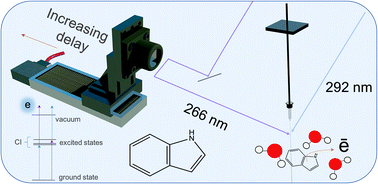
Faraday Discuss., 2018,212, 359-381
https://doi.org/10.1039/C8FD00123E
Spectral signatures of proton delocalization in H+(H2O)n=1−4 ions
Vibrational couplings in protonated water clusters are described by harmonic analysis, vibrational perturbation theory (VPT2) and diffusion Monte Carlo (DMC) approaches.

Faraday Discuss., 2018,212, 443-466
https://doi.org/10.1039/C8FD00120K
Fully quantum calculation of the second and third virial coefficients of water and its isotopologues from ab initio potentials
Path-Integral Monte Carlo methods were applied to calculate the second, B(T), and the third, C(T), virial coefficients for water and heavy water from state-of-art flexible potentials.
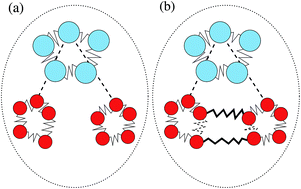
Faraday Discuss., 2018,212, 467-497
https://doi.org/10.1039/C8FD00092A
Alignment of 17O-enriched water–endofullerene H2O@C60 in a liquid crystal matrix
The water molecule in H2O@C60 endofullerene, dissolved in a nematic liquid crystal, is aligned with its plane perpendicular to the liquid crystal director.
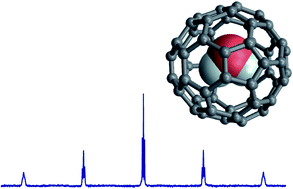
Faraday Discuss., 2018,212, 517-532
https://doi.org/10.1039/C8FD00095F
Disentangling the complex spectrum of the ethynyl cation
We investigate the low-lying electronic states of the ethynyl cation, C2H+, using pure ab initio methodologies.
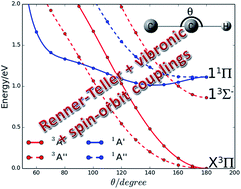
Faraday Discuss., 2018,212, 51-64
https://doi.org/10.1039/C8FD00091C
Theoretical studies of atmospheric molecular complexes interacting with NIR to UV light
Theoretical structural and spectroscopic data for weakly bonded atmospheric complexes of formaldehyde interacting with Earth’s electromagnetic spectrum.
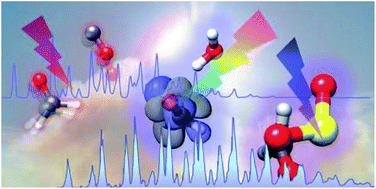
Faraday Discuss., 2018,212, 421-441
https://doi.org/10.1039/C8FD00094H
Properties of Feshbach and “shape”-resonances in ozone and their role in recombination reactions and anomalous isotope effects
Three reaction pathways for formation of symmetric and asymmetric isotopologues of ozone.
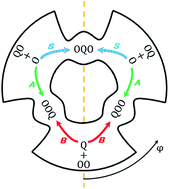
Faraday Discuss., 2018,212, 259-280
https://doi.org/10.1039/C8FD00089A
Does cage quantum delocalisation influence the translation–rotational bound states of molecular hydrogen in clathrate hydrate?
In this study, we examine the effect of a flexible description of the clathrate hydrate framework on the translation–rotation (TR) eigenstates of guest molecules such as molecular hydrogen.
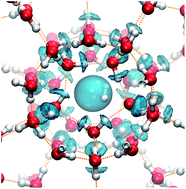
Faraday Discuss., 2018,212, 533-546
https://doi.org/10.1039/C8FD00087E
On the importance of initial conditions for excited-state dynamics
The vast majority of ab initio excited-state simulations are performed within semiclassical, trajectory-based approaches. Apart from the underlying electronic-structure theory, the reliability of the simulations is controlled by a selection of initial conditions for the classical trajectories. We discuss appropriate choices of initial conditions for simulations of different experimental arrangements: dynamics initiated by continuum-wave (CW) laser fields or triggered by ultrashort laser pulses.
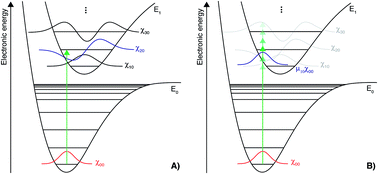
Faraday Discuss., 2018,212, 307-330
https://doi.org/10.1039/C8FD00088C
Collisional relaxation kinetics for ortho and para NH2− under photodetachment in cold ion traps
Computational modeling and selective photodetachment experiments allow us to match the global temporal evolution of anions’ losses in a trap with the selective losses estimated from theory.
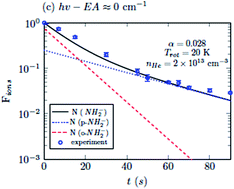
Faraday Discuss., 2018,212, 117-135
https://doi.org/10.1039/C8FD00078F
Large amplitude motions within molecules trapped in solid parahydrogen
Large amplitude motions involving hydrogen tunnelling can be preserved in molecules trapped in parahydrogen matrices, and observed through band splitting or under certain conditions by a temporal evolution of the spectra.
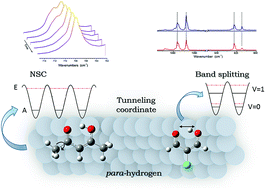
Faraday Discuss., 2018,212, 499-515
https://doi.org/10.1039/C8FD00080H
Effects of symmetry breaking on the translation–rotation eigenstates of H2, HF, and H2O inside the fullerene C60
Effects of symmetry breaking on the translation–rotation eigenstates of M@C60 (M = H2, HF, H2O) are visible in the infrared spectra of endofullerenes.

Faraday Discuss., 2018,212, 547-567
https://doi.org/10.1039/C8FD00082D
Natural reaction channels in H + CHD3 → H2 + CD3
Natural reaction channels control the mode-specific chemistry of methane and its isotopomeres.
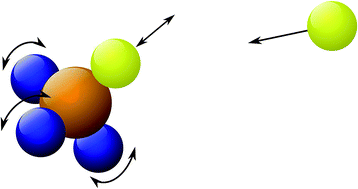
Faraday Discuss., 2018,212, 217-235
https://doi.org/10.1039/C8FD00081F
Teaching vibrational spectra to assign themselves
A new paradigm is described for assigning vibrational spectra that follows the blue path rather than the red one.
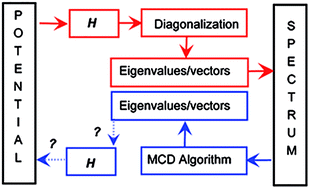
Faraday Discuss., 2018,212, 65-82
https://doi.org/10.1039/C8FD00075A
Electron-driven proton transfer enables nonradiative photodeactivation in microhydrated 2-aminoimidazole
Prebiotically credible activator of non-enzymatic RNA template-copying, 2-aminoimidazole, is protected from destructive photochemistry by photoacidity.
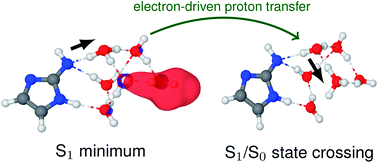
Faraday Discuss., 2018,212, 345-358
https://doi.org/10.1039/C8FD00086G
Curve crossing in a manifold of coupled electronic states: direct quantum dynamics simulations of formamide
Fully quantum direct dynamics simulations generate the potential surface manifold for the photo-excited dynamics of small organic molecules.
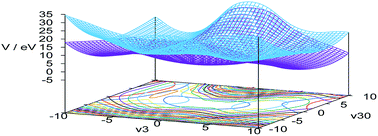
Faraday Discuss., 2018,212, 191-215
https://doi.org/10.1039/C8FD00090E
Excited state dynamics and time-resolved photoelectron spectroscopy of para-xylylene
We investigated the excited-state dynamics of para-xylylene using a combination of field-induced surface hopping simulations and time-resolved photoionisation experiments. Ultraviolet excitation is followed by nonadiabatic relaxation to the ground state in a two-step mechanism on the sub-ps time scale.
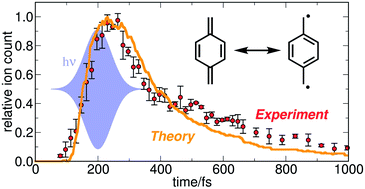
Faraday Discuss., 2018,212, 83-100
https://doi.org/10.1039/C8FD00083B
Multiple pulse coherent dynamics and wave packet control of the N2 a′′ 1Σ+g dark state by attosecond four-wave mixing
Dark states of molecular nitrogen in the XUV region are spectroscopically investigated using few-femtosecond dynamic wave packet control.
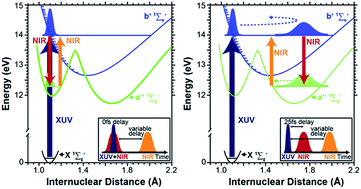
Faraday Discuss., 2018,212, 157-174
https://doi.org/10.1039/C8FD00074C
Quantum and classical IR spectra of (HCOOH)2, (DCOOH)2 and (DCOOD)2 using ab initio potential energy and dipole moment surfaces
Full-dimensional (24 modes) quantum calculation of the IR spectrum of (DCOOD)2, and comparison with classical MD one.
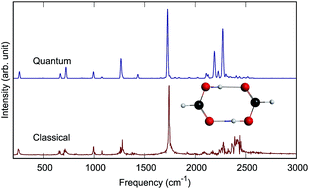
Faraday Discuss., 2018,212, 33-49
https://doi.org/10.1039/C8FD00077H
Proton transfer in guanine–cytosine base pair analogues studied by NMR spectroscopy and PIMD simulations
NMR isotope shifts provide a unique possibility to study the nuclear quantum effects of hydrogen-bonded nucleobases.
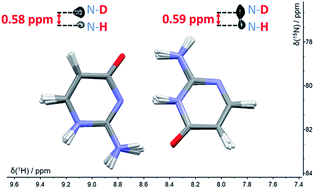
Faraday Discuss., 2018,212, 331-344
https://doi.org/10.1039/C8FD00070K
Molecules in confinement in clusters, quantum solvents and matrices: general discussion
Faraday Discuss., 2018,212, 569-601
https://doi.org/10.1039/C8FD90053A
Quantum dynamics of isolated molecules: general discussion
Faraday Discuss., 2018,212, 281-306
https://doi.org/10.1039/C8FD90052C
Molecules in confinement in liquid solvents: general discussion
Faraday Discuss., 2018,212, 383-397
https://doi.org/10.1039/C8FD90051E
Precise characterisation of isolated molecules: general discussion
Faraday Discuss., 2018,212, 137-155
https://doi.org/10.1039/C8FD90050G
About this collection
We are delighted to share with you a selection of the papers which will be presented at our Faraday Discussion on Quantum effects in small molecular systems taking place in Edinburgh, UK in September 2018. More information about the event may be found here: http://rsc.li/quantum-fd2018. Additional articles will be added to the collection as they are published. The final versions of all the articles presented and a record of the live discussions will be published after the event.
The quantum mechanical properties of small molecules provide the basis for our quantitative understanding of chemistry and a testing ground for new theories of molecular structure and reactivity. With modern methods, small molecular systems can be investigated in extraordinary detail by high-resolution spectroscopic techniques in the frequency or the time domains, and by complementary theoretical and computational advances. This combination of cutting-edge approaches provides rigorous tests of our understanding of quantum phenomena in chemistry. The chemical properties of small molecules continue to present rich challenges at the chemistry/physics interface since these molecules exhibit properties in isolation, and interact with their environments, in ways that are not yet fully understood. The coupled electronic and nuclear motions may lead to complex structural or dynamical features that can now be observed experimentally. From a theoretical point of view, these features can only be explained if the quantum nature of the atomic nuclei is considered together with the possible couplings between nuclear and electronic degrees of freedom.
New developments, from both the theoretical and experimental side, are urgently needed if the properties of small molecules are to be optimally exploited in future technological, engineering and biological applications of outstanding importance.
This Faraday Discussion will address the quantum dynamical properties of small molecules, both in isolation where extraordinarily detailed and precise measurements and calculations are now emerging, and when embedded in complex media such as molecular clusters, quantum fluids and bulk liquids.